History
1948 – 1954, Director James L. McCord
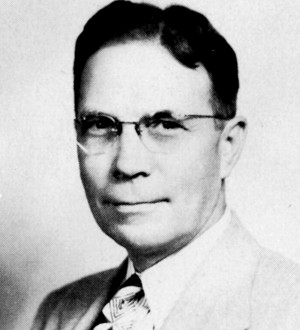
Pensacola State College began as Pensacola Junior College, Florida’s first public junior college to be established under the Minimum Foundation Program Law in 1947. This law recommended that junior colleges become part of local school systems supported by government funding.
In this historical narrative, the College will be referred to as Pensacola Junior College (PJC) from 1948 to 2010 and thereafter as Pensacola State College.
With pioneer spirit, Pensacola High School Principal James L. McCord, Dean Jesse Barfield, and teacher Margaret Andrus completed the documents for a new junior college and wrote PJC’s first College Catalog.
James H. Allen, president of Florida Pulp and Paper Company, contributed two years’ rent for a boarding house at the southeast corner of Palafox and Cervantes streets. Pensacola Junior College held its first class there on September 13, 1948, with an enrollment of 136 students and James L. McCord as the first director.
Louis A. Ross, social science instructor, headed PJC’s first basketball team in 1949 and the first baseball team in 1951. During 1949-50, the first student newspaper, The Beachcomber, and the first yearbook, The Tide, were introduced.
Due to increasing enrollment, the College moved one block south on Palafox Street to the former Pensacola High School facility in June 1953.
1954 – 1963, President Henry L. Ashmore
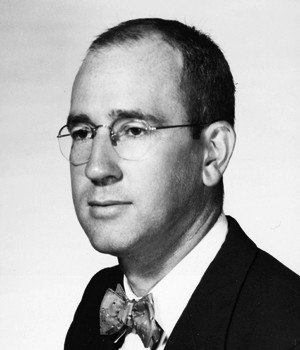
Henry L. Ashmore became Pensacola Junior College’s first president in 1954. A well-known consultant in the field of teacher training, Ashmore held a doctorate from the University of Florida and served as the regional director for the National Association of Student Teaching.
In January 1955, the PJC Alumni Association was chartered and Joe Frosio, a 1950 graduate, was the first president.
On May 13, 1955, Florida Governor LeRoy Collins signed a bill appropriating $1,243,000 to the College for building improvement.
The Pensacola Kiwanis Club had supported the bill and recommended a new campus location — the eighty acre Camp Franklin property on 9th Avenue, owned by the City of Pensacola and the Baars Estate.
Enrollment for 1955-56 totaled 1,147 students. The college faculty had expanded accordingly and the weekly employee newsletter, Green & White, was initiated in 1955 to facilitate internal communication. The name of the student newspaper changed from The Beachcomber to The Corsair.
Accreditation was granted by the Southern Association of Colleges and Secondary Schools in December 1956.
Students attended classes on the new 9th Avenue campus for the first time in September 1957.
In 1958, PJC began its second decade by introducing a two-year nursing program — the first of its kind in the Southeast. The nursing program began as a joint venture with Baptist Hospital.
Lyceum, PJC’s cultural enrichment program, also began in 1958. Created by John T. Venettozzi, Fine Arts and Humanities chair, Lyceum continues to bring nationally known speakers, musicians, and artists to the College.
The Student Union for Good Government and Greek organizations emerged during the early 1960s. In 1960, Delta Chi Omega became PJC’s first sorority, and in 1961, Delta Kappa Alpha became the first fraternity. Instructional television came to PJC in 1961. Closed-circuit broadcasting to PJC classrooms and selected public schools began in 1962.
PJC became one of three colleges in the state to establish a dental hygiene program in 1962.
In 1963, President Ashmore accepted the presidency at Armstrong State College in Savannah, Georgia.
1964 – 1980, President T. Felton Harrison
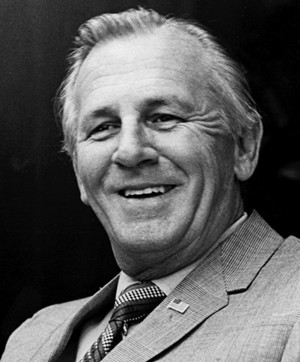
On July 1, 1964,T. Felton Harrison assumed the presidency. He had served as dean of instruction at PJC since 1957.
In 1964, the new Center for Adult Studies became home to Adult High School and PJC’s vocational and technical education programs.
The area’s first planetarium open to the public and a dental health clinic were included in an addition to the Mary Ellison Baars Science Building in 1965.
Expansion continued in 1965 with the opening of a new Educational Television Building. Lauded as the finest facility of its kind in the South, the new ETV Building housed two large television studios for closed-circuit television and a television station.
In September 1967,WSRE-TV Channel 23 went on the air open-circuit, beaming enrichment and college credit programs to the community.
The PJC Foundation was incorporated on November 1, 1965, with Crawford Rainwater as the first president.
President Harrison spearheaded the merger of PJC with Booker T. Washington Junior College (WJC) in 1965. WJC was the first black junior college built in Florida and had served the black community since 1949.
WJC President Garrett T. Wiggins joined the PJC administration as director of research. The merger brought approximately two-hundred black students to the PJC campus.
The Triple G Club was founded in 1968. It was later renamed the Black Student Union.
The Florida legislature passed a bill in 1968 changing authority over community colleges from local boards of advisors who reported to county school boards to local boards of trustees who reported to the State Board of Education.
PJC’s former advisory committee became the District Board of Trustees, the governing body of the College. The district was defined as including Escambia and Santa Rosa counties.
Pensacola Junior College’s first District Board of Trustees included James Lay, chairman, and members Leonard Wolf, O.M. Carter, H.T. Woodruff, Mrs. E.J. Moore, Shelby Walter, Warren Briggs, Dr. S.W. Boyd, and Earle Bowden.
In 1971, PJC’s Milton Center was created to better serve Santa Rosa County. Classes were held in the former Canal Street School in Downtown Milton with William H. Massey as the Milton Center’s first director.
WSRE began broadcasting in color in 1971.
In 1973, PJC celebrated its silver anniversary and dedicated a new $1 million Career Development Center that provided free services to more than 22,000 people each year.
Women were welcomed to varsity sports in 1974, and Joy DeSensi was hired part-time to coach the Lady Pirates basketball team.
In 1975, a $1 million Learning Resources Center with state-of-the-art technology opened on the Pensacola campus.
A new campus in Warrington opened for classes on August 22, 1977. The $8 million facility was built on 164.7 acres donated by the U.S. Government. Gaspare Tamburello, the college’s Veterans Affairs director and a retired U.S. Navy captain, was instrumental in acquiring this land.
John T.Venettozzi spearheaded the construction of the Warrington campus and became its first provost.
In February 1980, President Harrison announced plans for retirement.
1980 – 1997, President Horace “Ed” Hartsell

Following a national search, Horace “Ed” Hartsell became Pensacola Junior College’s third president in May 1980. Hartsell had been president of East Arkansas Community College in Forrest City.
Doug Worley, Dean of Personnel Affairs, was selected as director of the Milton Center in 1980 and named provost later that year.
In 1981, PJC began an academic honors program, the first to feature small classes and challenging material.
In December 1981, PJC opened a center at Naval Air Station Pensacola, offering daytime and evening classes to both military and civilian personnel. David Sutton served as NAS Center director from its inception through 2005.
A pristine eighty-acre site along Highway 90 was purchased for the new Milton Center in 1982. Designed to preserve its natural environment, the Milton Center opened for classes in January 1985 and offered new programs in horticulture and wildlife ecology. Phase II was completed in 1986.
In 1984, J.C. Thedford became the first provost of the Pensacola campus. The following year, Thedford became provost of community programs, and Richard Bedics became provost of the Pensacola campus.
In 1985, the Lady Pirates won the FCCAA State Basketball Championship, and Coach Vicki Carson was named FCCAA Coach of the Year. Carson had been selected as the first full-time coach for women’s basketball in 1980.
The Academy of Teaching Excellence was established in 1986 by Charles Atwell, executive vice president. Each year the Academy recognizes outstanding faculty who have exhibited excellence in teaching for a number of years.
In 1988, Coach Mary Bailey led the Lady Pirates slow-pitch softball team to the NJCAA Division I National Championship. Bailey had been softball coach since the Lady Pirates team formed in 1981.
In 1989, PJC opened a Downtown Center in the Blount Building, offering courses geared for working adults and the local business community. Continued growth prompted the move to a permanent, four-story facility on West Garden Street in 1996.
PJC honored its first president by naming the extensively renovated Building 8 as the Henry L. Ashmore Fine Arts Center in May 1990. The 314-seat auditorium and adjoining classrooms were originally constructed during Ashmore’s tenure.
The Baroco Center for Science and Advanced Technology was dedicated in October 1990.The 125,000-square-foot center provided the latest in science, math, computer science and advanced technology programs and houses a high-tech planetarium.
In 1993, PJC sports enjoyed a banner year with the Pirates winning two national championships. The Pirates basketball team, under Coach Bob Marlin, became the first Florida team to win the NJCAA Division I National Championship in basketball.
The Pirates golf team, under Coach Jim Donovan, won the NJCAA Division II National Championship that same year.
The Kugelman Center for Telecommunications opened in 1994 to house WSRE-TV. The $7 million, 43,000-square-foot facility is home to the area’s first digital television station.
The $5 million LIFE Center sports complex at the Milton Center was dedicated in 1995.
President Hartsell and the District Board of Trustees began a program in 1995 to acquire land adjacent to the Pensacola campus for College expansion and growth.
PJC’s Milton Center became the site for the University of Florida’s West Florida Research and Education Center in 1996. Students earn bachelor’s degrees in Natural Resource Conservation or Environmental Horticulture, taking all upper level courses locally.
In 1997, President Hartsell and the District Board of Trustees announced plans for an eighty-foot bell tower on the Pensacola campus as part of PJC’s fiftieth anniversary celebration. The carillon was named for M.J. Menge, a 1956 PJC graduate and the College’s general counsel for thirty-one years.
The year 1997 also marked the beginning of PJC’s fourth presidential search as President Hartsell began plans for retirement in 1998.
1998 – 2002, President Charles A. Atwell
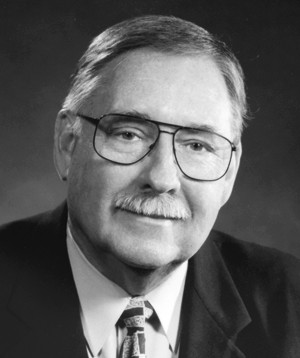
Following a national search, Charles A. Atwell became Pensacola Junior College’s fourth president. His inauguration coincided with PJC’s fiftieth anniversary on September 8, 1998. Atwell had served as the College’s Executive Vice President since 1986.
Women’s volleyball began in fall 1998 with Kim Hollon coaching. The next year, PJC alum Pete Pena took over as volleyball coach.
In December 1998, the PJC Foundation launched the College’s first capital campaign. The lead gift of $1 million from the Switzer and Reilly families established the Anna Lamar Switzer Center for Visual Arts. The campaign exceeded its goal, reaching more than $5 million. Nearly 750 individuals, organizations, and businesses participated in the fund drive, including more than 300 PJC faculty and staff.
PJC’s first Endowed Teaching Chair, named in honor of Margaret Moore Nickelsen, was awarded to Lou Fazio, dental health professor, in 1999.
During 1999-2000, PJC served 30,742 students in both college credit and non-credit courses, including those offered through dual enrollment at area high schools.
The Sandra and Grover Robinson III Honors Program began in August 2000 with forty-two Robinson Scholars.
In fall 2000, a student ambassador program was initiated to help increase student recruitment and retention.
Construction for the Warrington campus Health Sciences Complex and the Anna Lamar Switzer Center for Visual Arts began in January 2001.The first Anna Lamar Switzer Endowed Teaching Chair was awarded to photography professor Warren Thompson.
In celebration of Community College Month 2001, PJC began a “Legends” program honoring employees who had served twenty-five years or more.
On July 3, 2001, WSRE became the second public broadcaster in Florida to air a digital signal. The station initiated a capital campaign in 2002 with a goal of $2 million to complete the digital conversion.
Former First Lady Barbara Bush visited PJC in February 2002 to help the Foundation launch the Universal Scholarship and Adult Literacy Fund.
The 2002 Pirates baseball team enjoyed renovated facilities and placed third in the State Baseball Tournament, setting a team record of 39 wins.
Between 2001-02 the Lady Pirates enjoyed great success. The volleyball team won the Panhandle Conference championship, the softball team was voted Academic Team of the Year in the Panhandle Conference, and Coach Vicki Carson earned her 400th win in women’s basketball.
In 2002, the Anna Lamar Switzer Center for Visual Arts held a grand opening, and the Charles A. Atwell Health Sciences Complex was dedicated.
For the first time, the Foundation presented Governor Emeritus awards to Wayne Peacock and Jim Stolhanske in 2002.
President Atwell announced plans for retirement in 2002.
2002 – 2008, President G. Thomas Delaino

Following a national search, G. Thomas Delaino became Pensacola Junior College’s fifth president on September 18, 2002. Delaino had served as Senior Vice President and Vice President of Planning and Administration at the College since 1993.
In 2003, Gael Frazer became the College’s first associate vice president for Institutional Diversity.
The Pirate baseball team won the State Championship, and Coach Bill Hamilton was named Coach of the Year in May 2004. This was the first state title for Pirates baseball since it began in 1951.
Category Three Hurricane Ivan devastated the area in September 2004, leaving more than $10 million in damage to the College’s three campuses, Downtown Center, and NAS Center.
U.S. President George W. Bush held a town hall meeting at the College in March 2005.
Lady Pirates’ basketball coach Vicki Carson won her five-hundredth game in January 2005. At the end of the season, Carson retired from twenty-five years of coaching with 515 wins, the most wins in FCCAA history. Chanda Rigby was named new head coach for women’s basketball. In February 2005, the Garrett T. Wiggins Student Affairs Complex was dedicated in honor of Wiggins, who was president of Booker T. Washington Junior College when it merged with PJC in 1965. In March 2005, the 16,257 square-foot Jean and Paul Amos Performance Studio was dedicated with several Public Broadcasting celebrities attending the weekend event at WSRE.
A new student literary magazine, Issue, debuted in June 2005 with Marzia Accardo as the first editor.
Green & White, the official internal weekly newsletter established in 1955, went to solely electronic publications with the July 18, 2005, issue.
Beginning August 2005, PJC’s academic calendar changed to three full semesters — fall, spring, and summer — with each offering four sessions with different starting and ending dates.
PJC participated in the first nation-wide observation of Constitution Day on September 22, 2005, with speakers and free copies of the U.S. Constitution.
The Foundation celebrated its fortieth Anniversary in 2005 by honoring the six visionary businessmen who launched it in 1965 — Crawford Rainwater Sr., E.W.Hopkins, M.J.Menge, Warren Briggs Sr., Howard Rein, and Gaspare Tamburello.
Partnering with Habitat for Humanity, the College began a carpentry program in May 2006, giving students experience by building local Habitat homes.
The 2006 FCCAA Hall of Fame inducted Ken McAferty, the college’s Brain Bowl coach for twenty-three years, and Vicki Carson, women’s basketball coach for twenty-five years.
The 2007 FCCAA Basketball Coaches Hall of Fame inducted Vicki Carson; Bob Marlin, former men’s basketball coach; and Mike Gilbert, long-time scorekeeper.
All-College Day was launched February 2, 2007, with all faculty and staff participating in professional development workshops.
Retired President Ed Hartsell was honored with the dedication of the newly renovated Hartsell Basketball Arena on February 21, 2007.
The Corsair student newspaper won the national Pacemaker Award for the first time for its online version, eCorsair, in 2007.
Harvard University medical faculty conducted a three-day seminar at PJC’s Mary Ekdahl Smart Center for Patient Simulation Training and Research on the Warrington campus in May 2007.
President Tom Delaino was honored for outstanding leadership in the community with the PACE Pioneer Award in February 2008.
Milton Center sponsored its twentieth Forestry Conclave and Lumberjack Festival in February 2008.
President Delaino retired in May 2008.
2008 – Present, President C. Edward Meadows
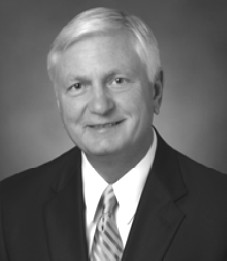
Following a national search, C. Edward “Ed” Meadows was selected as Pensacola Junior College’s sixth president and began leading the College in June 2008. Meadows previously had been president of Lurleen B. Wallace Community College in Alabama.
NASA astronaut and PJC alum Alan Poindexter took a specially minted, gold PJC medallion with him on a 5.3 million-mile Atlantis space shuttle mission in February 2008. In June, he presented the medallion to President Meadows and College officials at a Pensacola campus ceremony open to the public.
September 8, 2008, marked the sixtieth anniversary of Pensacola Junior College. Celebratory events included cake cutting ceremonies on each campus and an outdoor, evening concert directed by Don Snowden, longtime Music and Theatre Department Head.
In October 2008,The Corsair captured the General Excellence Award for Florida community college papers for the fifteenth time in eighteen years.
PJC’s nursing program received full accreditation from the National League for Nursing and Accrediting Commission in 2008.
The Practical Nursing Program ranked number one out of all 1,036 programs across the nation for the period of April through September 2008.
In 2008, PJC partnered with the Pensacola Area Chamber of Commerce to open the Center for Innovation and Entrepreneurship at the Downtown Center. This incubator program provides a supportive environment to new business startup for high technology and virtual entrepreneurs.
The SkillsUSA student organization was chartered and began hosting the regional secondary and post-secondary skills competitions in 2008.
In November 2008, the College Board of Trustees unanimously voted to pursue the offering of baccalaureate degrees.
PJC’s nationally recognized Smart Simulation Center was designated as a Center of Educational Excellence by Laerdal Medical Corp in December 2008. PJC is only the second community college in the country to receive this distinction.
In 2008, the District Board of Trustees revised the official College colors of green and white to green, white, and blue. The PJC mascot logo also was revised to a pirate profile designed by PJC alum Brett Swanson, son of Paul Swanson, longtime men’s basketball coach.
In April 2009, the Milton Center entry road was renamed Worley Boulevard in honor of Douglas Worley, the Center’s first provost.
Lady Pirate softball players christened their new field on the Pensacola campus with double header wins, April 22, 2009. From its beginning in 1981, the softball team had played all home games at the Milton Center.
In August 2009, the Edward M. Chadbourne Library was dedicated after a $9 million renovation and expansion. The spacious facility was named in honor of Chadbourne, a PJC alum, who through the Chadbourne Foundation gifted more than $1.2 million for student scholarships.
During the September 2009 investiture ceremony for President Ed Meadows, the District Board of Trustees named all previous Pensacola Junior College presidents as Presidents Emeriti: Henry L. Ashmore,T. Felton Harrison, Horace “Ed” Hartsell, Charles A. Atwell, and G.Thomas Delaino.
G.I. Jobs magazine and website named PJC as a Military Friendly College in 2009 for its benefits to veterans and active duty military.
In December 2009, the Hobbs Center for Teaching Excellence was dedicated on the Pensacola campus. During the ceremony, Pensacola Junior College President Ed Meadows and University of West Florida President Judy Bense signed a partnership allowing UWF students to join PJC students in benefiting from the high-tech facility. The Hobbs Center, created through a $1 million gift in October 2007, benefits Adult High School and Secondary Education students as well as students taking college-credit classes to become teachers.
In January 2010, the District Board of Trustees approved the renaming of Adult High School to Collegiate High School to better reflect its purpose.
In Spring 2010, PJC was named to the President’s Higher Education Community Service Honor Roll. It was one of only four Florida community colleges honored with this national recognition.
WSRE, PBS for the Gulf Coast, won a Bronze Telly Award and a People’s Telly Award in 2010 for its original documentary, “Gulf Islands National Seashore: The Treasure of the Gulf Coast,” narrated by renowned documentarian Ken Burns.
Athletic Director and Head Baseball Coach Bill Hamilton was inducted into the NJCAA Hall of Fame in May 2010. In twenty-three seasons, with twenty at PJC, Hamilton amassed 702 career wins, the most wins in the College’s history.
Astronomy professor Wayne Wooten received the National Astronomical League Award, the highest award in amateur astronomy, in June 2010.
In 2010, the College received approval from the Florida State Board of Education and from the Southern Association of Colleges and Schools Commission on Colleges to offer baccalaureate degree programs: Bachelor of Science in Nursing and Bachelor of Applied Science in Administration and Supervision. Classes began for both programs in January 2011.
On July 1, 2010, the College name officially changed from Pensacola Junior College to Pensacola State College to reflect its expanded mission.
The College broke ground in July 2010 for its $9.4 million South Santa Rosa Center, becoming the first College building to be constructed as a certified Leadership in Energy and Environmental Design (LEED) building.
In 2010, the Milton Center was elevated to Milton Campus status by the State Board of Education.
In March 2011, the Lady Pirates basketball team, coached by Chanda Rigby, ended a 35-1 season with thirty-four straight wins. The Lady Pirates won the FCCAA State Championship for the first time since 1985 and the Panhandle Conference Championship for the first time since 1994, and returned from the National Junior College Athletic Association finals, ranked number three in the nation. Coach Rigby was named Panhandle Conference and FCCAA Coach of the Year.
In January 2011, inaugural classes began for Bachelor of Science in Nursing (BSN) and Bachelor of Applied Science in Administration and Supervision (BAS) programs .
In March 2011, the Lady Pirates basketball team ended a record-breaking 35-1 season with 34 straight wins. Lady Pirates won the FCCAA State Championship for the first time since 1985, the Panhandle Conference Championship for the first time since 1994, and returned from the NJCAA finals, ranked No. 3 in the nation. Lady Pirates Basketball Coach Chanda Rigby was named Panhandle Conference and FCCAA Coach of the Year.
The first President’s Leadership Institute was initiated in 2011 as a rigorous, year-long professional development program open to full-time college employees selected through a competitive process.
In June 2011, the Florida Heritage Site Historical Marker was unveiled honoring the original site of the college at the corner of Palafox and Cervantes streets in downtown Pensacola.
For the first time in the college’s history, bachelor’s degrees were awarded at the December 2011 graduation. The seven students receiving BAS and BSN degrees also received specially minted coins recognizing their accomplishments and serving as a talisman for their future endeavors.
In January 2012, Pensacola State opened two new centers – the new 35,000 square-foot South Santa Rosa Center and the extensively-renovated Century Center.
The Lady Pirates basketball players made history in March 2012 as the college’s first athletic team to win back-to-back FCSAA State Championships. Coached by Chanda Rigby, the team again ended the season ranked third in the nation.
Pensacola State College received the first annual Higher Education Excellence in Diversity (HEED) Award from INSIGHT Into Diversity magazine in November 2012.
The college began 2013 by unveiling a lively new logo reflecting Pensacola State College's name change and beautiful coastal area.
In April 2013, PSC hosted the largest-ever Florida SkillsUSA State Conference, drawing more than 6,500 participants.
PSC Visual Arts Professor Bill Clover received the U.S. President's Call to Service Lifetime Achievement Award for contributing more than 7,000 hours of volunteer service to Manna Food Pantries.
PSC Performing Arts Instructor Kadisha Onalbayeva was named an International Steinway Artist and performed on the legendary Steinway & Sons Horowitz piano in the North American tour.
In September 2013, PSC celebrated its 65th anniversary as the oldest college in the area and launched a new Alumni Affairs office to better serve the college's more than 96,000 graduates.
PSC opened a stunning, new 13,500-square-foot facility to house the PACE Center for Girls in fall 2013. This is the only PACE Center in Florida located on a college campus.
In 2014, Visual Arts Students won 41 of 50 ADDY awards in local college/university competition, 10 ADDY awards in district competition, and two ADDY awards in national competition.
In June 2014, PSC and the University of West Florida launched the PSC2UWF partnership to better facilitate students who complete an associate degree from PSC and transfer to UWF to complete a bachelor's degree.
From its modest beginnings in 1948, Pensacola State College has grown into a premier, student-friendly college that competes with the best.